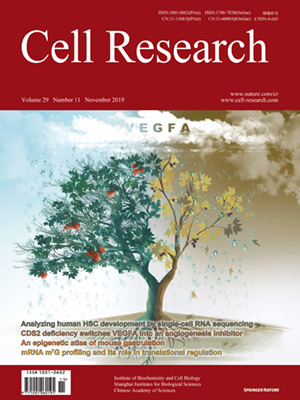
Volume 29, No 11, Nov 2019
ISSN: 1001-0602
EISSN: 1748-7838 2018
impact factor 17.848*
(Clarivate Analytics, 2019)
Volume 29 Issue 11, November 2019: 960-963
LETTERS TO THE EDITOR
Structural insights into the recognition of γ-globin gene promoter by BCL11A
Yang Yang1, Ziyan Xu1, Chao He2, Beibei Zhang1, Yunyu Shi1 and Fudong Li1
1 Hefei National Laboratory for Physical Sciences at Microscale and School of Life Sciences, University of Science and Technology of China, 230026 Hefei, Anhui, China and 2Anhui Key Laboratory of Modern Biomanufacturing and School of Life Sciences, Anhui University, 230601 Hefei, Anhui, China
Correspondence: Yunyu Shi (yyshi@ustc.edu.cn) orFudong Li (lifudong@ustc.edu.cn)
Dear Editor,
In humans, the β-like globin genes are encoded from a single locus comprising five globin genes (ε-, Gγ-, Aγ-, δ-, and β-globin in sequence) and their expression is under critical developmental control (Fig. 1a).1 The γ-globin genes (Gγ- and Aγ-) are expressed during fetal life, and then replaced by adult β-globin after birth.1 Mutations in the β-globin gene cause β-hemoglobinopathies such as sickle cell disease (SCD) and β-thalassemia.1,2,3 The clinical severity of SCD and β-thalassemia can be mitigated by elevated fetal hemoglobin (HbF) levels, which have been found in individuals with the benign hereditary persistence of fetal hemoglobin (HPFH) syndrome.1,3 Thus, reactivating the expression of γ-globin genes is an attractive treatment strategy for β-hemoglobinopathies, and understanding the mechanisms of the γ- to β-globin switch is crucial for designing target interventions to reactivate γ-globin expression.
https://doi.org/10.1038/s41422-019-0221-0
FULL TEXT | PDF
Browse 1232


